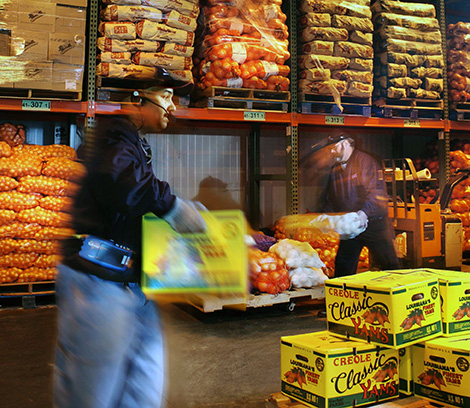Smart beverage packaging can create innovative customer experiences, reduce waste, improve safety and more. Today’s packaging technologies can transform how customers and retailers interact with beverage products. What benefits can manufacturers gain from integrating smart packaging into their products?
1. Improved Customer Convenience
Smart beverage packaging can drastically improve customer convenience. Simple text labels are the typical information available to customers on a beverage bottle. They are mainly looking at the expiration date and the ingredients, but more information could be available. Smart packaging can offer more details and indicate the qualities of a beverage more efficiently.
For example, intelligent freshness sensors can go inside or outside the beverage container. Chemical sensors can automatically respond to changes in the beverage’s condition, such as chemical indicators that the beverage is expired. When the sensor detects those indicators, it changes color.
So, regardless of the estimated expiration date, a customer can quickly see when a beverage goes bad. A color-coded responsive chemical sensor on the beverage packaging is also easier to understand for those with vision difficulties or children who have not learned to read yet.
2. Less Beverage Waste
The USDA estimates that 30 to 40% of America’s food supply goes to waste annually, creating billions of dollars of lost revenue. This deprives thousands of people of food and beverages that could have fed families in need. Preventing food waste is a complex problem for food and beverage manufacturers since waste often happens in grocery stores.
Smart packaging could help reduce food waste by making it easier for retail employees to identify beverages nearing expiration dates. Additionally, some types of smart packaging devices could improve logistics for retailers so cases of older drinks aren’t lost or misplaced before they expire.
For example, beverage manufacturers can ship their units in cases with smart RFID or QR tags that retailers can easily track. The tags could be scanned or entered in an inventory management database where retail employees could view expiration date notifications and inventory items from oldest to newest.
Similarly, smart packaging features like color-coded chemical freshness indicators could be helpful for employees as well as customers. Colors are much easier to identify at a glance than numerical expiration dates. As a result, it is more likely that employees would notice a unit that is older than others and know to get it on shelves while it is still fresh.
3. Safety Verification and Recalls
Traditional product recalls use purchase dates or batch numbers to identify at-risk units. Sometimes all recently-purchased units need to be recalled. Customers may even guess whether a unit is risky based on the expiration date. These methods require careful inspection of the text on the packaging or the receipt, which many customers don’t keep.
Smart packaging technologies like QR codes or chemical sensors can relieve some confusion surrounding individual unit safety. Efficient, accessible and effective packaging technologies for verifying unit safety can allow beverage manufacturers to pursue a broader range of products safely.
For example, recycling water can help reduce water waste and minimize strain on natural water sources, particularly in areas with scarce clean water sources. In fact, the average American household wastes 95% of the 400 gallons of water they consume each day. With the right filtering and cleaning processes, manufacturers could recycle this water.
Beverage manufacturers could safely use recycled water by integrating smart sensors into their packaging. This precautionary design element would allow customers to quickly verify that their recycled water product is safe to drink. A growing number of customers are prioritizing sustainability today as long as they can do so safely. This type of design feature could open new doors in the sustainable beverage market.
If a product needs recall, customers and retailers can scan a QR code on each unit’s packaging to see if it is part of the affected batch.
4. Easy Tracking of Beverage Shipments
Logistics is becoming increasingly complicated today as businesses face high competition, rising freight costs and a need for more truck drivers. So, it’s more important than ever to have effective ways to track beverage shipments. Smart packaging can increase logistics visibility and reduce the risk of lost or damaged goods.
RFID asset tracking allows businesses to use RFID tags to monitor objects remotely. Beverage manufacturers could integrate these tags into shipping crates or cases. The tags help logistics personnel organize their freight while allowing the manufacturer to have GPS tracking on their shipment.
Additionally, climate monitoring tags can quickly reveal if goods were damaged during transit. Smart sensor tags are available today that respond chemically to environmental changes, such as temperature or moisture. So, if the conditions inside a crate of beverages shift outside of a safe threshold, the sensor will show the change.
5. Innovative Consumer Experiences
Smart packaging can create fresh, unique interactive experiences with customers that build engagement and foster brand loyalty. There are a growing variety of technologies for doing this, such as QR codes and NFC tags. Both utilize customers’ smartphones to generate individualized experiences for them.
For example, a beverage company could put a QR code on their bottles that links to a video showing customers how to make a smoothie with their beverage. Businesses can also use QR codes for gamification, such as rewarding points toward coupons or a raffle. All of these engagement opportunities can build connections between customers and brands.
Beverage companies can even use QR codes and NFC to increase environmental transparency. Sustainable packaging is a big deal to many customers today. Surveys show almost 70% of consumers would pay more for sustainable packaging options.
Beverage companies can create digital interactive maps of their products’ supply chain to illustrate sustainability efforts. A QR code or NFC tag on the packaging can connect customers with this interactive digital experience. Creating such an experience to explain the environmental impact of a product can be a great way to foster loyalty with sustainability-minded customers.
The Future of Beverage Packaging
Smart packaging can be revolutionary for beverage manufacturers. Packaging technologies like QR codes, RFID, smart sensors and more can create a better customer experience and simplify operations for retailers and logistics. Integrating smart packaging can lead to safer products, less waste and heightened customer engagement.

















